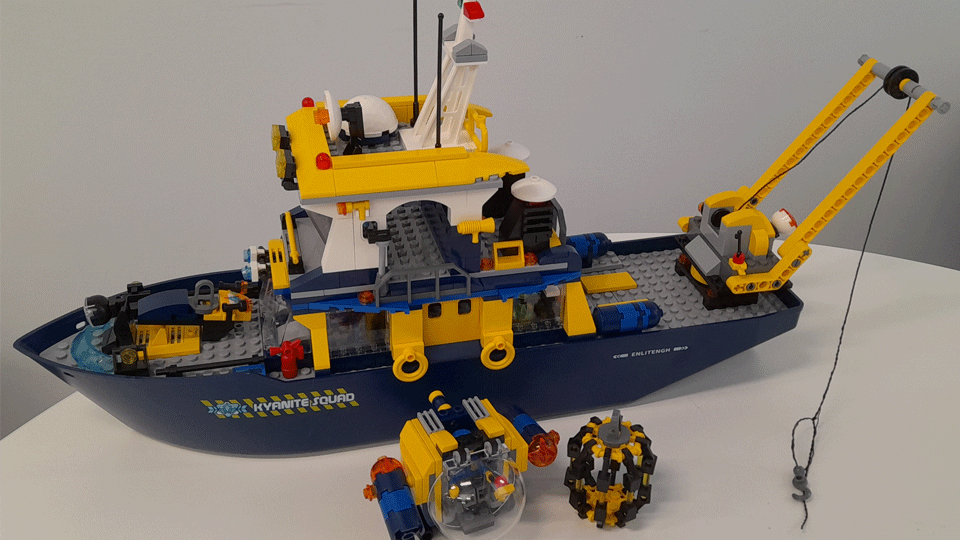18.Measuring underwater avalanches in the deep sea (and crushing coffee cups)
Prof. Dan Parsons
Avalanches of sediment that move along the seabed (called turbidity currents) are the biggest flows, form the largest sediment accumulations, deepest canyons and longest channel systems, on Earth.
The scale of individual turbidity currents can also be exceptionally large and single events can transport more sediment than all of world rivers combined across an entire year. It was previously thought that directly measuring these powerful turbidity currents that reached the deep-sea was impractical. However, new technologies deployed from research vessels and using autonomous and remote underwater vehicles (ROV) – like Boaty McBoatface and the Lego model here – is allowing direct monitoring of these deep-sea turbidity currents for the first time. Over 99% of global data traffic that underpins the internet travel through seabed fibre optic cables and an ongoing study that Dan is co-leading, in the Congo Canyon offshore West Africa, captured a flow that moved down to 5 km water depth some 1130 km from the mouth of the Congo River, severing a set of seabed telecommunication cables. These cable breaks slowed the internet in Africa by over 90% for weeks. The pressure at this depth is so great that the polystyrene coffee cup here, that travelled with an ROV to the bottom of the ocean has been crushed to 1/5 of its size!

Find out more
Read one of Dan’s publications on measuring the largest flows on the planet:
https://www.nature.com/articles/s41467-022-31689-3
Learn more about the work on the BBC website:
https://www.bbc.co.uk/news/science-environment-57382529
https://www.bbc.com/future/article/20170706-the-mystery-of-the-massive-deep-sea-rivers